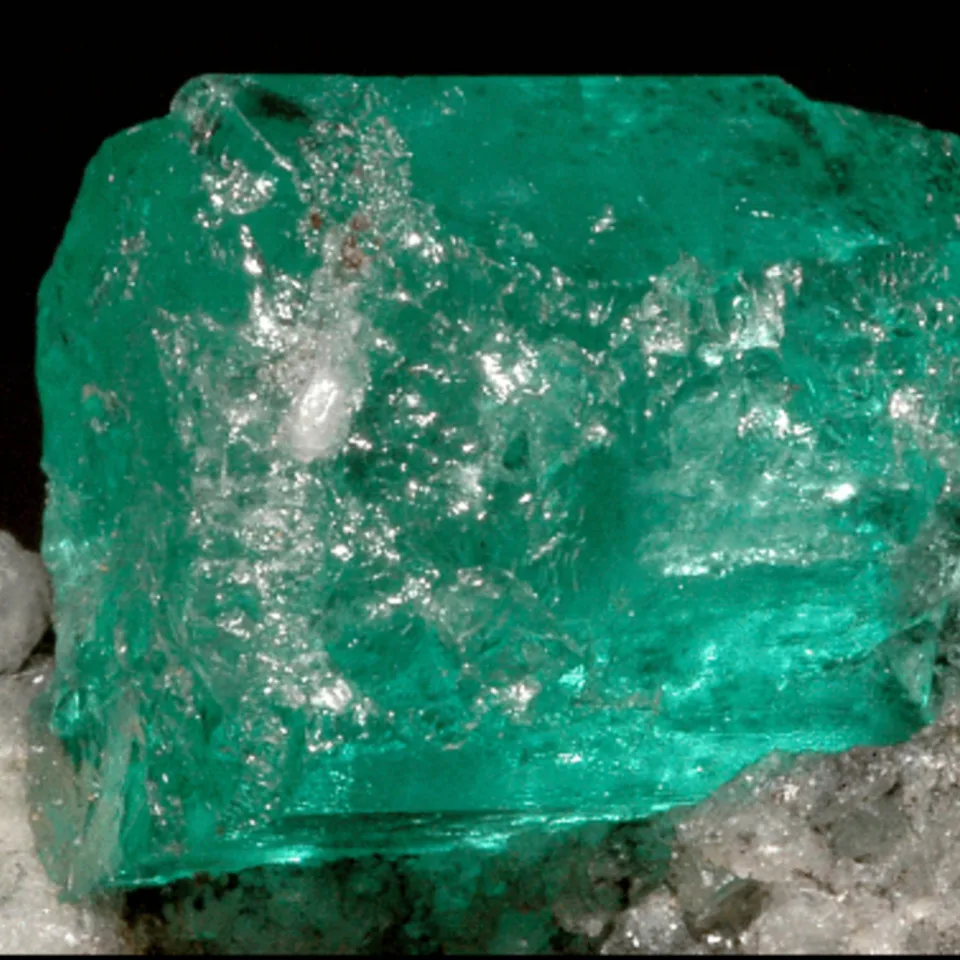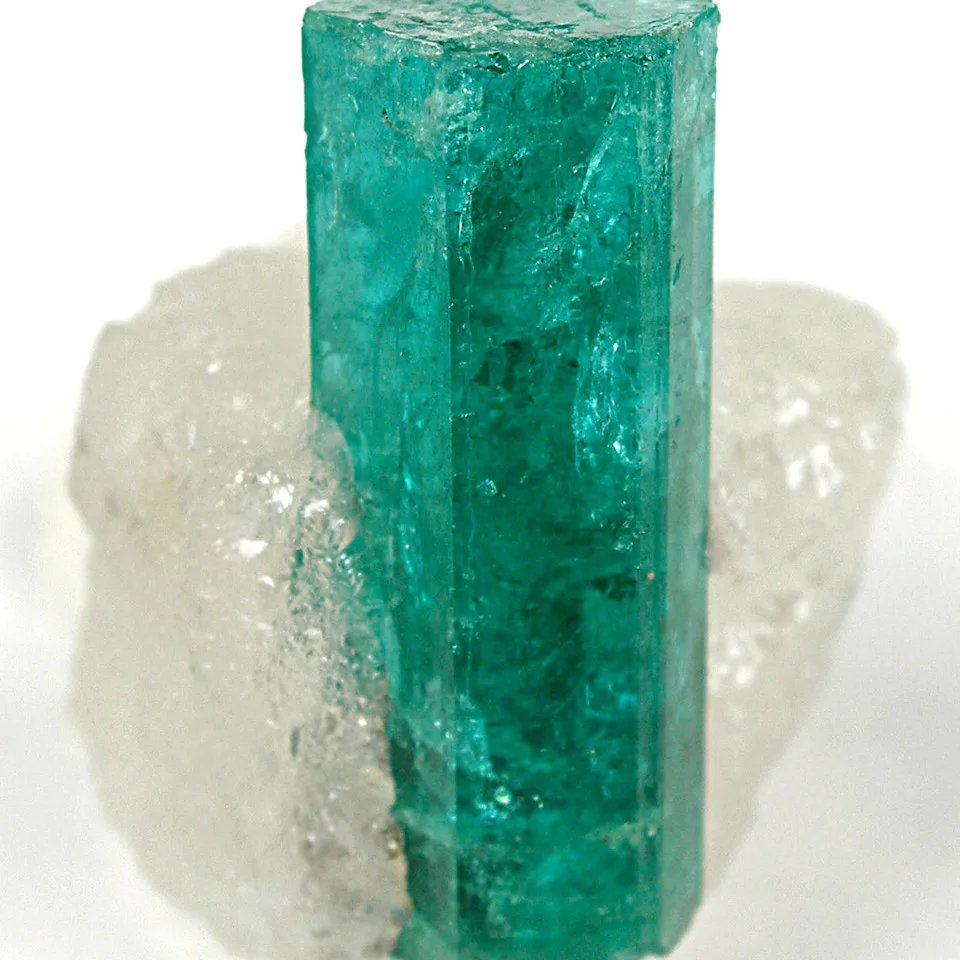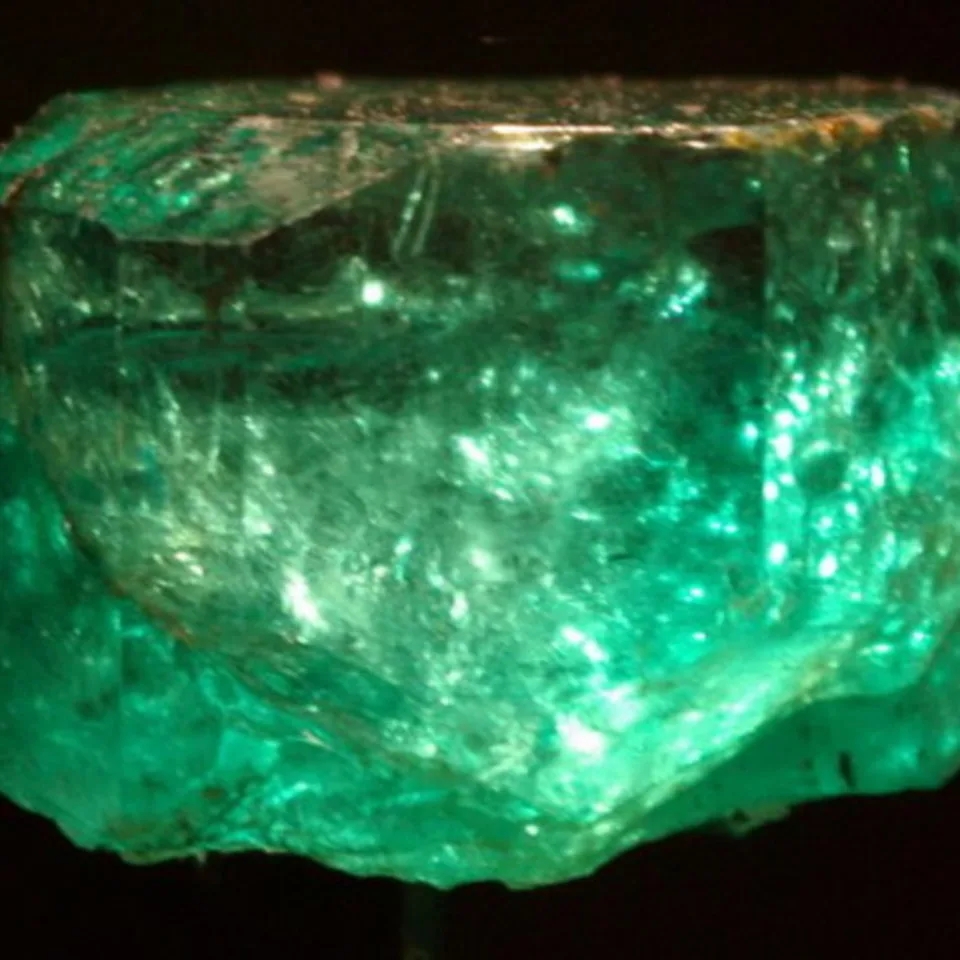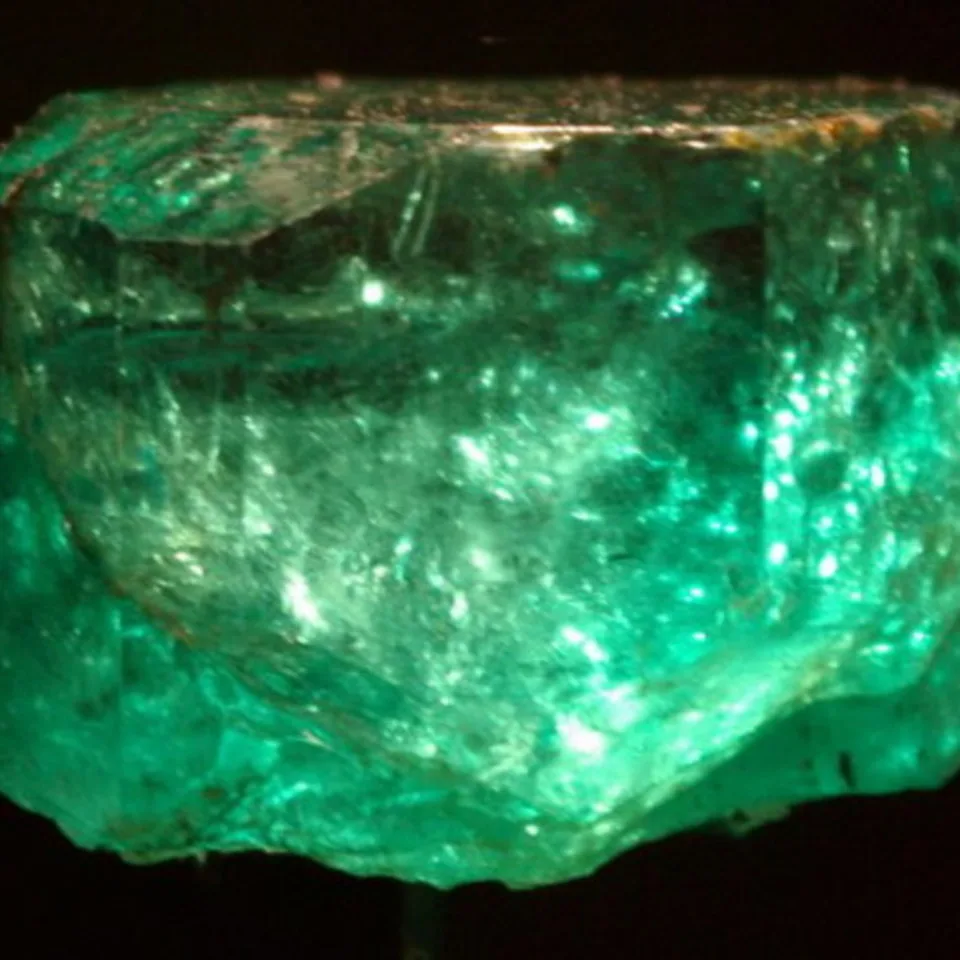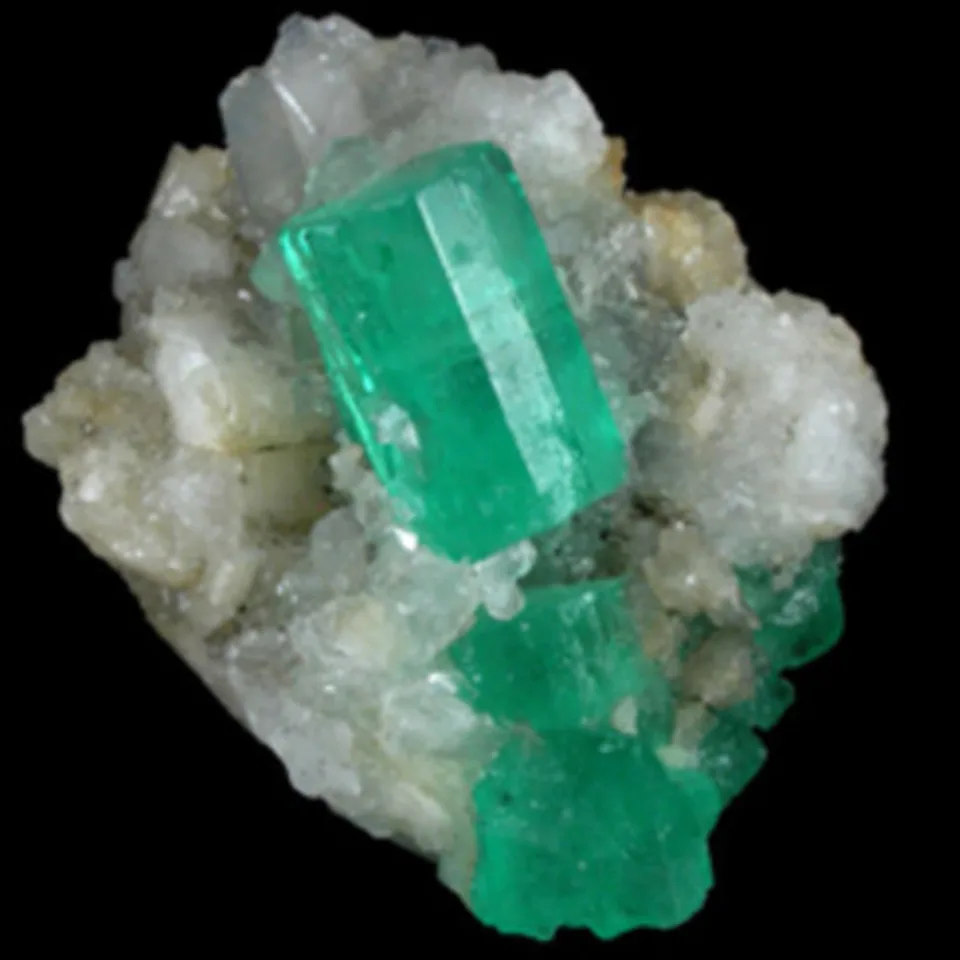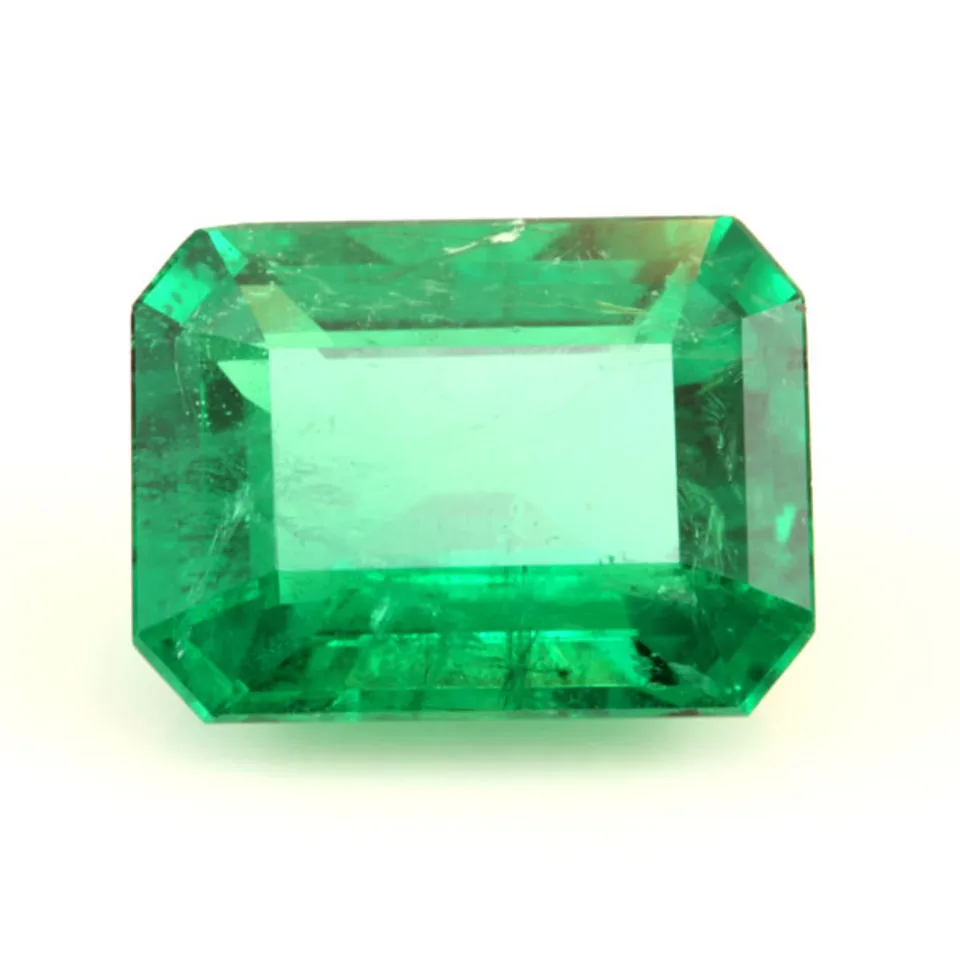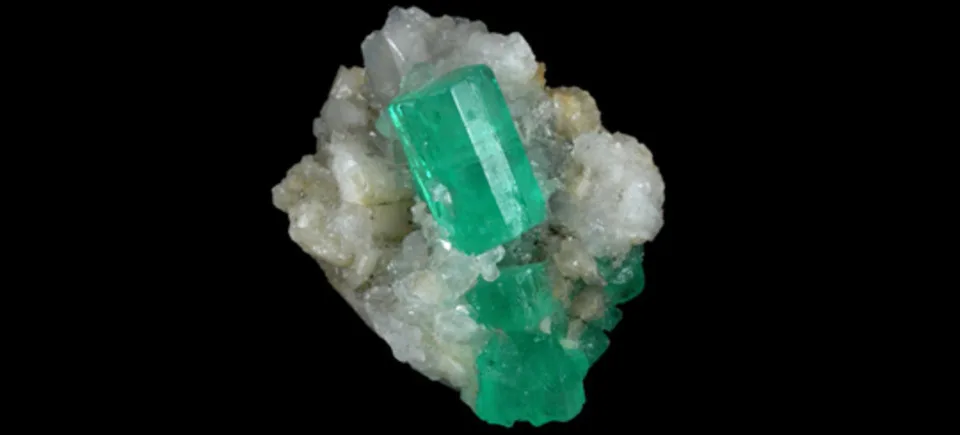Emerald
Emeralds are highly valued, deep green gems, deriving their color from chromium. They are the traditional May birthstone, though those born in May might require deep pockets to obtain a good quality emerald. The nature of their formation leads to a greater number of flaws in emeralds than in some other gems. Therefore, a relatively unflawed gem is rare and expensive. Emeralds can be found throughout the Middle East, but are now primarily mined in Columbia.
Middle Eastern cultures valued the gems greatly, and representations of jewelry containing emeralds predate the Common Era. Cleopatra was said to have thought emeralds were the finest of all gems. The Maharajahs of India treasured the emerald as well, and old treasure collections of past Indian rule are filled with these marvelous green stones. The Mogul Emerald is one of the largest known stones, over 200 carats in size.
This gem is currently owned by an unidentified buyer, who purchased it during a 2001 auction at Christie’s for over $2,000,000.The largest known stone was found in Columbia, and is extremely impressive at over 600 carats. It can be viewed at the Museum of Natural History in New York City. Though emeralds have a hardness of 7.5 on the Mohs Scale, inclusions in the stones can cause easy breakage.
For this reason, commercial emeralds are often coated in resin to avoid damage to the stone. All emeralds have some flaws because they form in three stages. Flaws are referred to as jardins, or French for garden, suggesting that flaws naturally blossom from formation processes. Small, greatly flawed emerald chips are generally inexpensive adornments in jewelry. Large numbers of flaws affect the luminosity of the stone, and small chips may look more like jade than a clear gem. Larger emeralds with fewer jardins are indeed rare, and can therefore be very costly.
